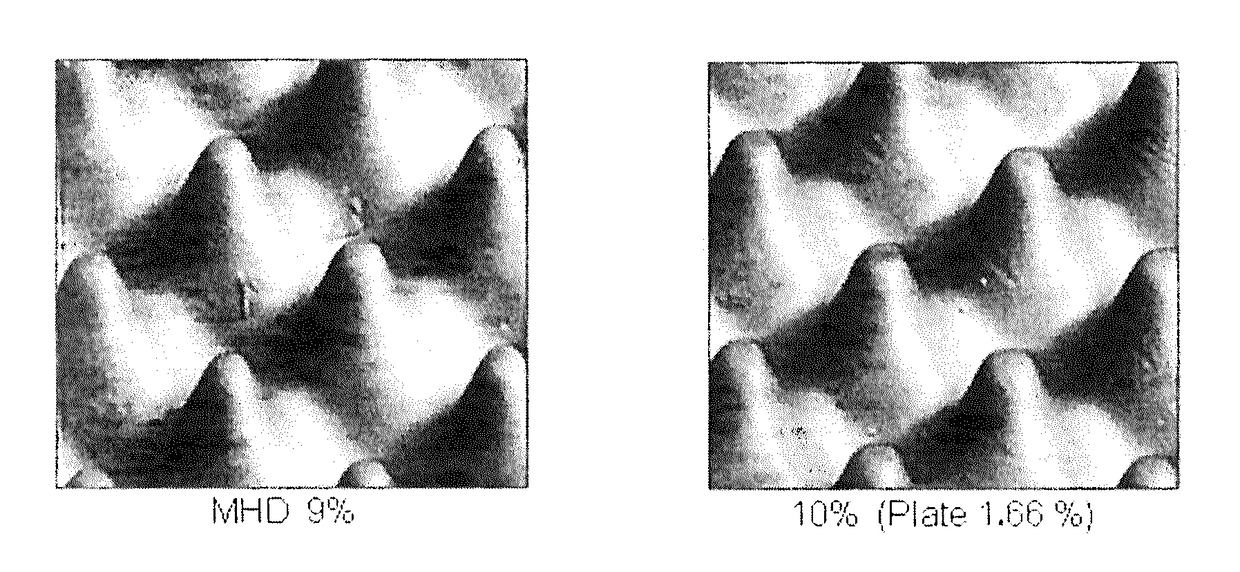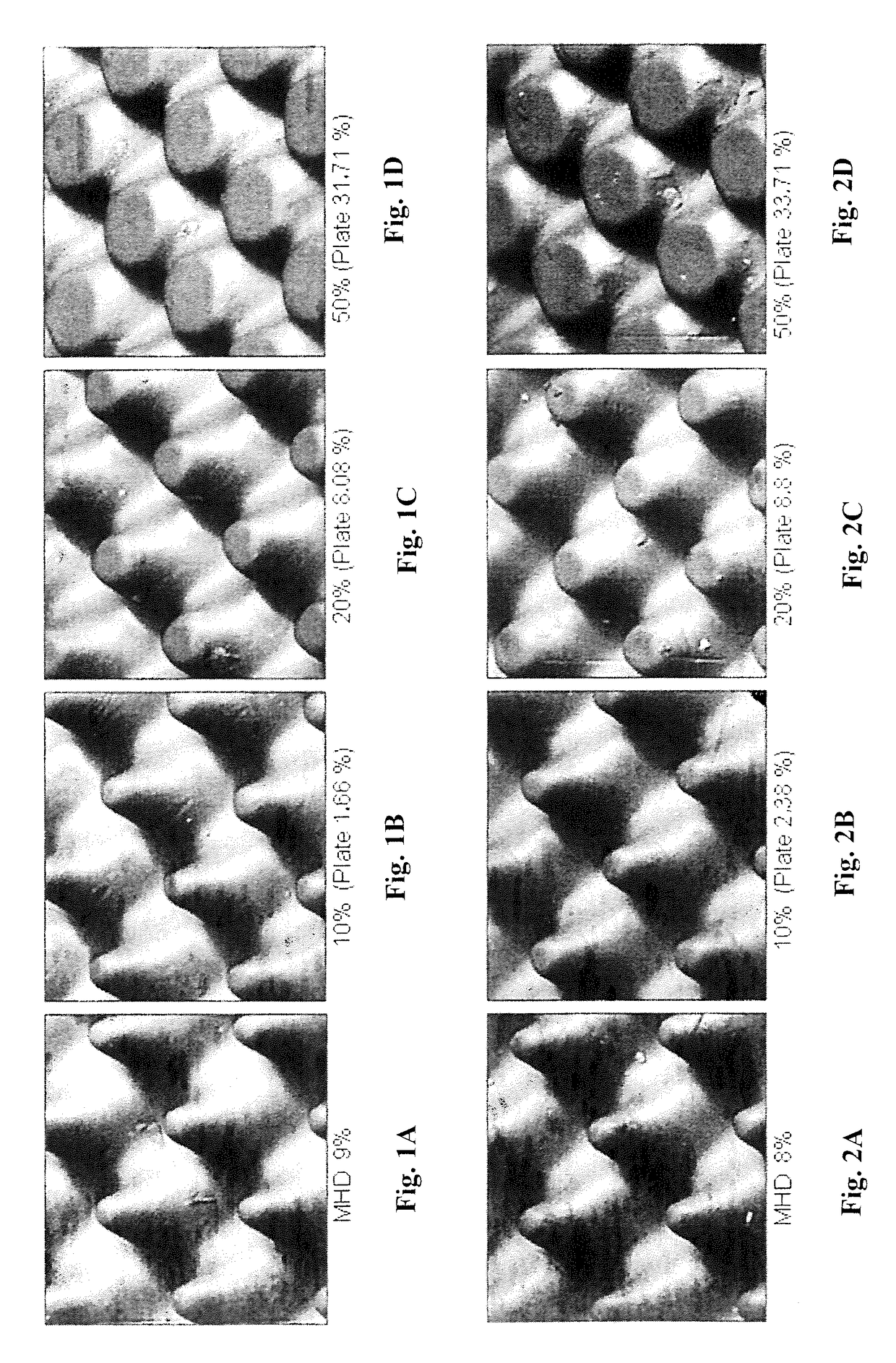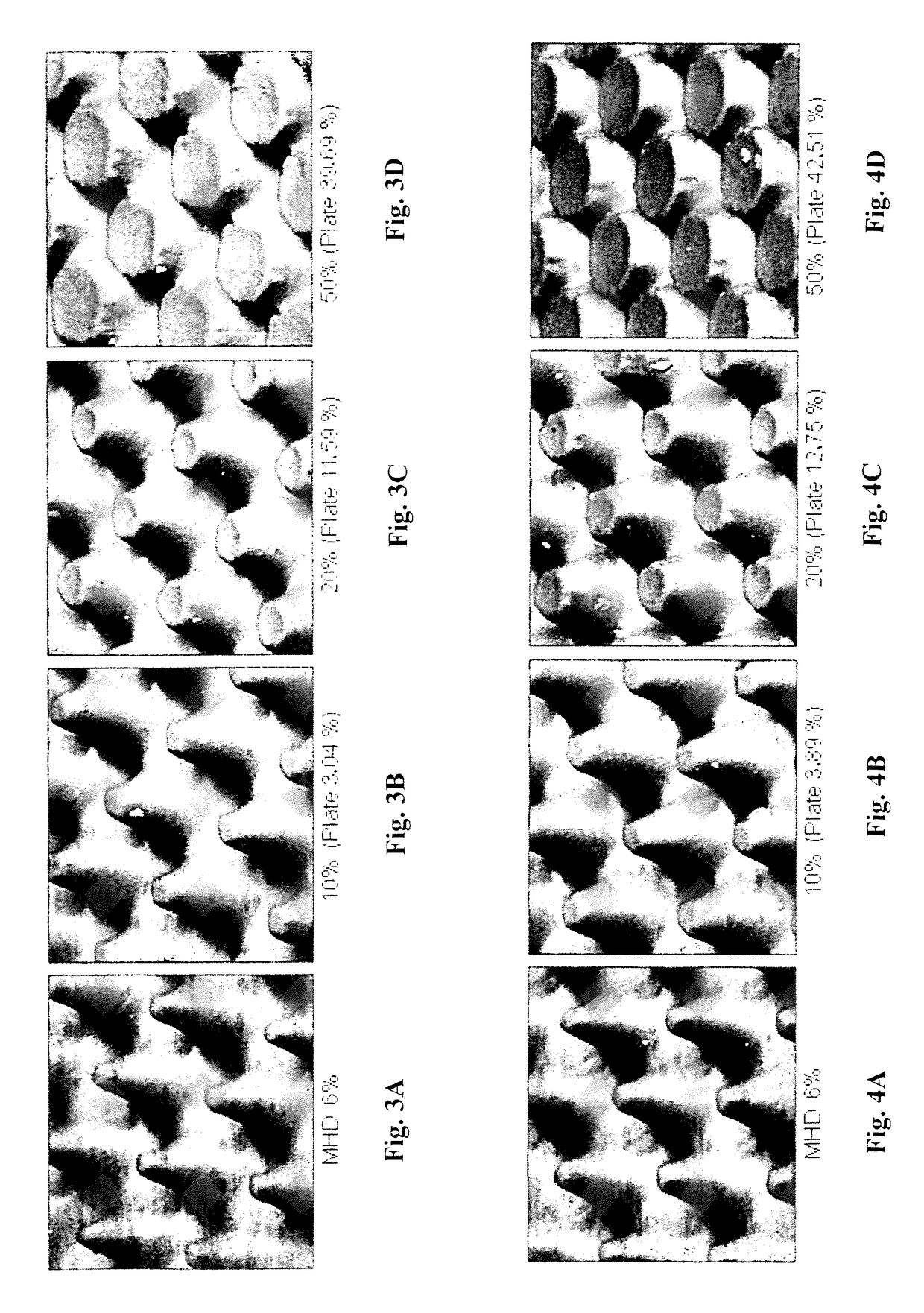Method of creating hybrid printing dots in a flexographic printing plate
a hybrid printing and printing plate technology, applied in the direction of microlithography exposure apparatus, instruments, photomechanical treatment, etc., can solve the problems of limiting the gray scale range available, pure flat top structures may not be suitable for use in such jobs without compromising quality, etc., to achieve the effect of improving photocurable composition and improving photocurabl
- Summary
- Abstract
- Description
- Claims
- Application Information
AI Technical Summary
Benefits of technology
Problems solved by technology
Method used
Image
Examples
example
[0079]A series of photocurable compositions was prepared using the components set forth below in Table 1. The concentration of the BHT was varied between about 0 and about 2% by weight while the remaining ingredients remained constant. As shown in FIGS. 1A-1D through 5A-5D, the concentration of BHT in the photocurable composition was 0, 0.05, 0.2, 0.96 and 1.92% by weight.
[0080]
TABLE 1ConcentrationIngredient(% by Wt.)Binder (Kraton D1114)67HDDA15PB100023Irgacure 6513Tinuvin 11300.075BHT0.1-2.0Primasol red0.01
[0081]The prepared photocurable compositions were disposed on a backing layer and imagewise exposed to actinic radiation to selectively crosslink and cure the photocurable compositions in the desired relief pattern, including 1%, 10%, 20% and 50% dots. Thereafter, the photocurable compositions were solvent developed to remove uncured portions of the photocurable composition and reveal the relief image. SEMs of the resulting printing dots are shown in FIGS. 1A-1D through 5A-5D.
[0...
PUM
| Property | Measurement | Unit |
|---|---|---|
| photocurable | aaaaa | aaaaa |
| weight | aaaaa | aaaaa |
| concentration | aaaaa | aaaaa |
Abstract
Description
Claims
Application Information
 Login to View More
Login to View More - R&D
- Intellectual Property
- Life Sciences
- Materials
- Tech Scout
- Unparalleled Data Quality
- Higher Quality Content
- 60% Fewer Hallucinations
Browse by: Latest US Patents, China's latest patents, Technical Efficacy Thesaurus, Application Domain, Technology Topic, Popular Technical Reports.
© 2025 PatSnap. All rights reserved.Legal|Privacy policy|Modern Slavery Act Transparency Statement|Sitemap|About US| Contact US: help@patsnap.com



